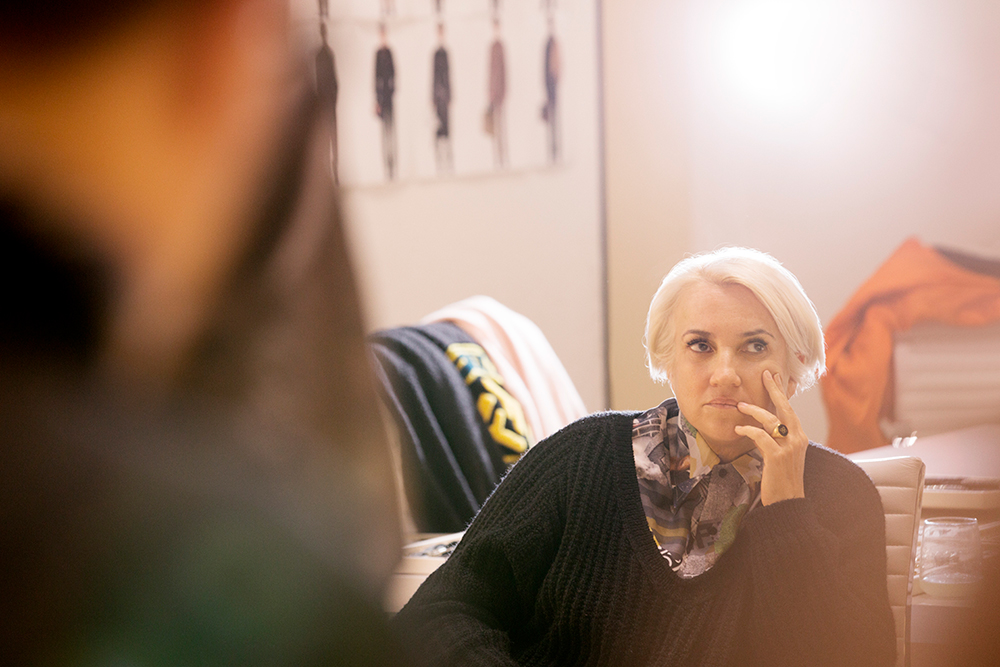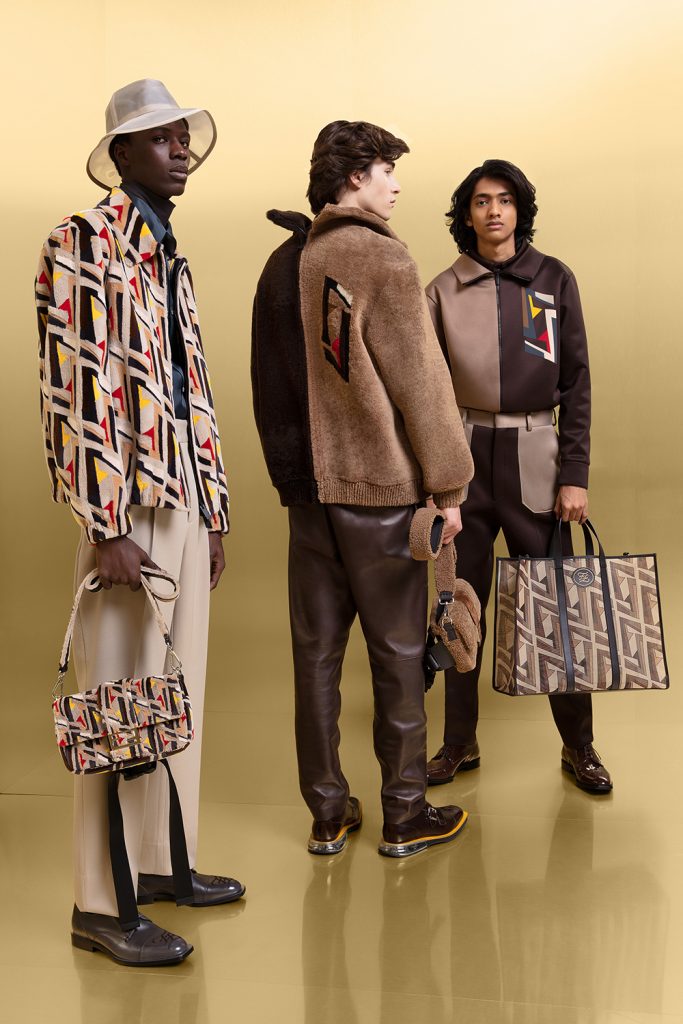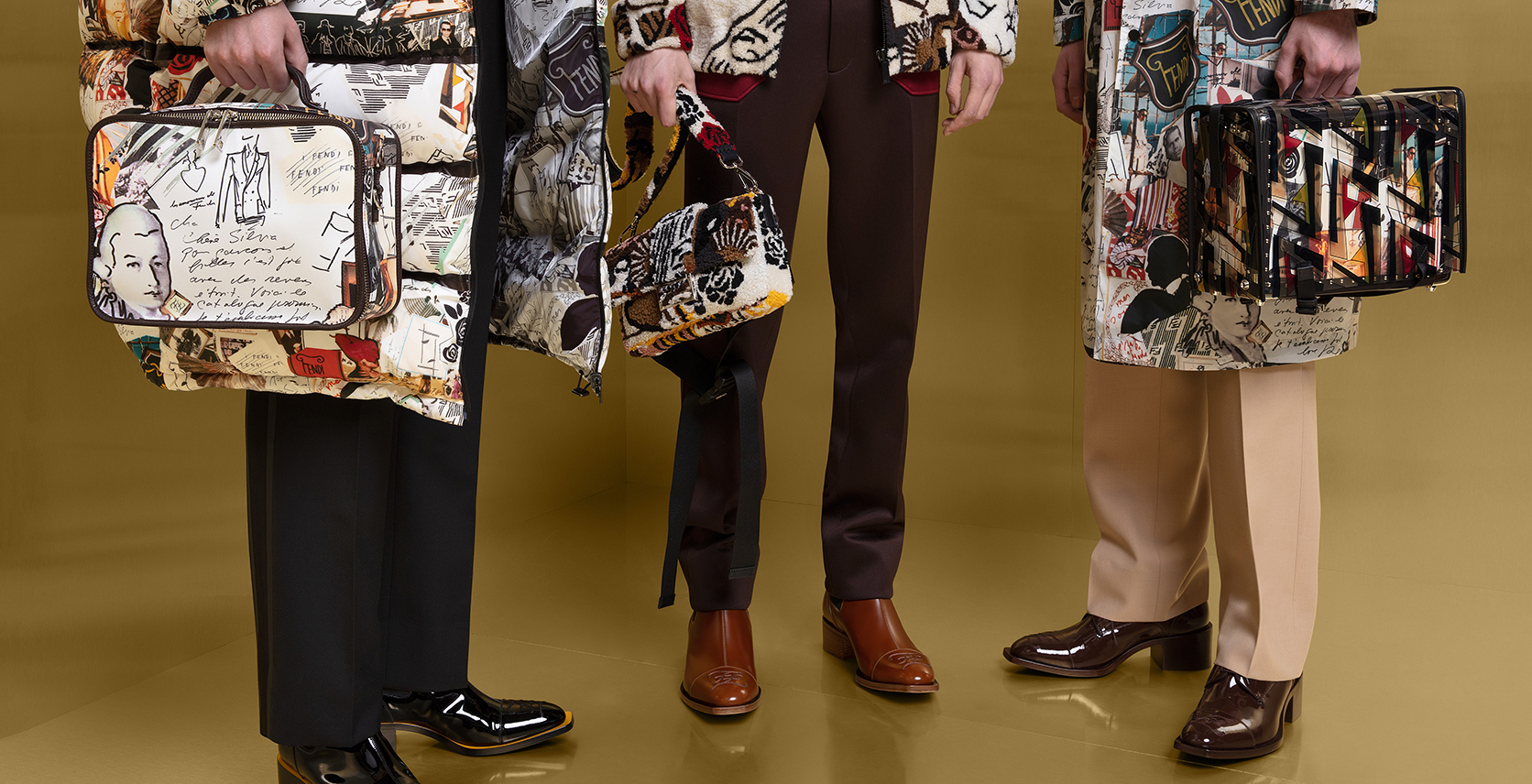Silvia Venturini Fendi Has Her Eyes Firmly on the Future
Most designers would say their work is personal, but this is especially true for Silvia Venturini Fendi. The creative director of menswear at Fendi represents the third generation of her family to work in a creative capacity at the storied Roman fashion house that bears her name. And over the past two decades, she has certainly made her mark, first with accessories, and now, with the men’s collections. Venturini Fendi became famous for the Baguette bag, a women’s icon first released in the late 1990s. This year, she reinvented the bag by releasing it as a men’s accessory — a nod to the brand’s past that feels urgently current, which could also define her overall approach to her work.
Her latest collection is especially personal, as it was her final collaboration with “guest artist” Karl Lagerfeld. The result is a collection that says as much about her vision for Fendi as it does about her ideas of menswear right now: a swirl of influences both futuristic and retro, concerned with the past but looking straight ahead toward the future.
Karl Lagerfeld was the guest artist for this latest collection. What was it like working with him?
For every men’s show I invite a guest artist to collaborate on the collection. This time I asked Karl Lagerfeld and he immediately said yes. The day after, he sent me a sketch that I received on my phone, and that’s how we started a long-distance dialogue made of ideas that, meeting after meeting, became a dream come true.

What are your favourite elements of the collection?
The starting point of the collection is Karl’s sketch. It represents a very formal suit but with a double collar: one side has a normal lapel while the other side has a shawl lapel. It represents duality, not only because we work as a duo, but because dualism is something very dear to Fendi. In fact, dualism is evident in the whole collection, not only in the suits. For example, I opposed heavy and more structured fabrics with very light and almost transparent and see-through ones. There are coats made with one half in wool and the other half in organza. Dark colours like brown, blue, beige, and especially black, which is Karl’s colour, are opposed to metallic ones, which are another signature of the collection.
Where do you find your aesthetic inspiration?
Since Karl was the guest artist for this collection, I used his style and personality as a reference. I wanted to work on the idea of tailoring and he’s the most iconic man I have ever seen in my life. He has always been wearing suits, yet in a different way in all his phases.

What should every man have in his closet?
A great bag! While working on the idea of dualism, I did something that had already been done in the past with the Peekaboo bag: I turned a women’s bag into a men’s bag, this time with the Baguette. The Baguette has been a timeless bag for over 20 years, and I think that it’s nice to wear it in different ways: the way it was conceived at the time, with the shoulder strap, that today you can also detach and change with a longer strap — or you can detach the long strap and it becomes like a belt bag, or even wear the three of them together, under the arm but attached at the waist!










